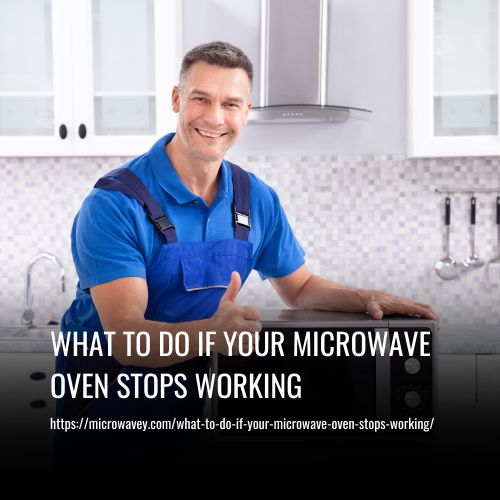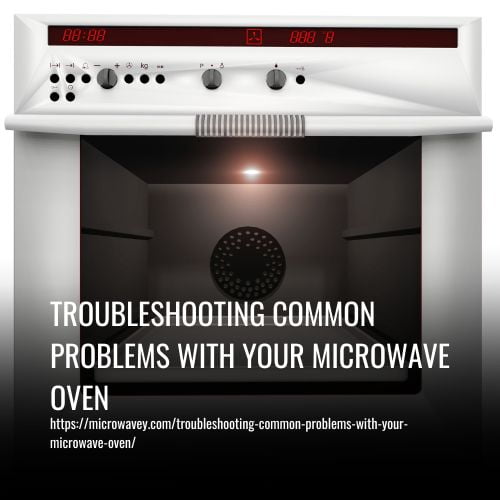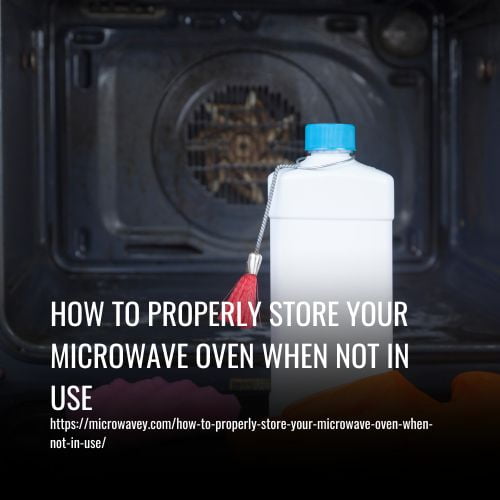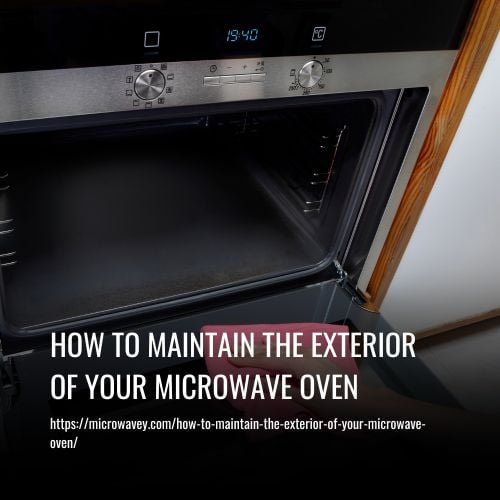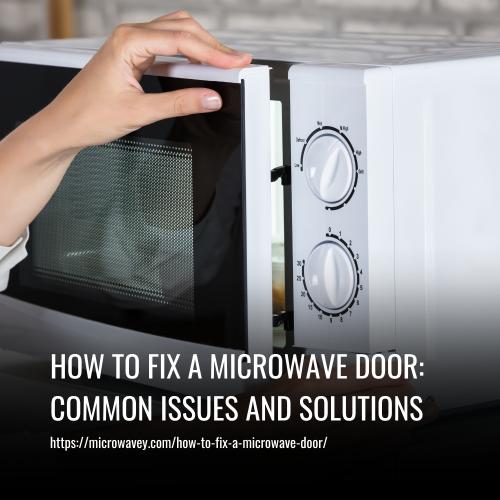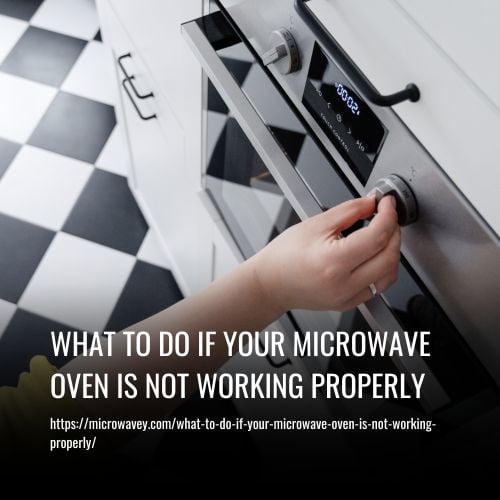Microwave Is Hot When Not In Use – What To Do?
If your microwave is overheating even when not in use, it could be due to several possible reasons. The first step is to immediately unplug the microwave from the outlet and monitor it to note exactly when it gets hot. Check the power cord and the fan for any issues, and also assess the diode and the magnetron for potential problems.
If the microwave is getting burning hot when not in use, there may be an electrical short, in which case it is crucial to unplug it immediately. It is also recommended to consider calling an appliance repair person, although this could be more expensive than replacing the microwave altogether.
To Know what to do when the Microwave Is Hot When Not In Use, follow these steps:
- Unplug the Power Source.
- Monitor When the Microwave Gets Hot.
- Look at the State of the Power Cord.
- Check the Health of the Fan.
- Assess the Diode.
- Evaluate the Magnetron’s Performance.
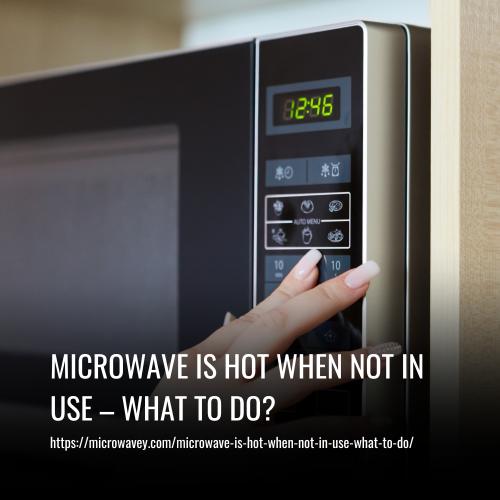
To learn more about how to go about each of these troubleshooting methods, keep reading:
1. Unplug the Power Source:
If your microwave is getting hot even when it’s not in use, the first step is to unplug it from the power source. Locate the power cord, which is typically plugged into an outlet on the counter or in the wall. Gently remove the plug from the outlet to cut off the power supply to the microwave, preventing it from heating up further.
Use caution when doing this, as the microwave will be hot despite not being turned on. Wear oven mitts or use pot holders to protect your hands from the heat and reduce the risk of burns. Avoid using the microwave if it feels hot to the touch, as this can lead to further damage and pose a safety hazard. Unplugging the power source is the crucial first step in addressing a microwave that is getting hot when it’s not in use.
2. Monitor When the Microwave Gets Hot:
After unplugging the microwave, wait for 10-15 minutes and feel for heat on all sides, both inside and outside. Pay special attention to any areas that feel warmer than others, as this could indicate where the overheating is occurring.
If the microwave is still equally warm all around, wait another 10 minutes before checking again. The most overheated area will stay warm longer, helping you identify the source of the issue. This monitoring process will allow you to pinpoint any overworked or malfunctioning parts of the microwave that may be causing it to overheat. Do not leave the microwave unattended during this monitoring process to ensure safety.
3. Look at the State of the Power Cord:
After unplugging the microwave and identifying where the heat is coming from, the next step is to check the state of the power cord. The power cord is the main source of power and heat for the microwave. Start by examining how the cord is attached to the microwave and ensure the wiring and casing are intact with no bending or cracking, especially at the head of the cord.
If there is visible damage at the head of the cord on either end, this could be a concentrated area for electricity and heat to build up, causing the microwave to retain heat. If the power cord is damaged, replacing it will likely fix the issue.
4. Check the Health of the Fan:
To check the health of the fan on your microwave, first unplug the microwave. Refer to your microwave’s owner’s manual to locate the fan, which is typically on the back panel. Slowly spin the fan in both directions to ensure it can rotate fully. Remove any obstructions that may be preventing the fan from spinning properly.
If the fan is rusted, it may need to be replaced. Once the fan is replaced, securely attach the back panel to the microwave. Following these steps in order will allow you to effectively check the health of the fan on your microwave.
5. Assess the Diode:
To assess the diode in your microwave, you will first need to ensure that the microwave has been unplugged for at least 24 hours to safely access the diode in the control panel. You will then need to have a multimeter on hand to test the functionality of the diode.
The diode is responsible for allowing the electricity from the power cord to power the microwave. If the diode is not functioning properly, it can lead to either too much or too little power being used to power the microwave.
Using the multimeter, you can test the diode to determine whether it is working correctly or not. If the diode is malfunctioning and not converting electricity properly, it may need to be replaced to ensure that the microwave operates at the appropriate power levels.
6. Evaluate the Magnetron’s Performance:
To evaluate the magnetron’s performance in your microwave, start by removing the circuit board from the electrical panel on the back of the microwave. Then, disassemble the panel to access the magnetron. Once you have access, use a multimeter to test on an open circuit.
If you hear a loud beeping sound coming from the multimeter, this indicates that the magnetron is working fine and does not need to be replaced. This evaluation is the next step after checking the diode and can help determine if the magnetron is the cause of your microwave overheating.
Reasons Your Microwave Gets Hot When Not in Use:
Have you ever noticed that your microwave seems to get hot even when it’s not in use? There are several reasons why this might happen, and understanding the causes can help you determine if there’s an issue that needs to be addressed.
1. The Magnetron Is Malfunctioning:
If your microwave is getting hot, even when it’s not in use, it could be due to a malfunctioning magnetron. The magnetron is responsible for producing the microwaves used to heat food, and when it isn’t working correctly, it can generate excess heat, causing the appliance to overheat. This can lead to damage to the internal components and more serious problems if left unchecked.
It’s important to get a malfunctioning magnetron fixed as soon as possible. The best course of action is to contact a professional appliance repair service that can diagnose and repair the issue quickly and safely. Attempting to fix the problem yourself could be dangerous and should only be tried by experienced professionals with the proper tools and safety equipment.
2. The Fan Isn’t Working Properly:
If your microwave fan isn’t working properly, it could be due to a clogged fan or a malfunctioning motor. This can result in heat building up inside the appliance, making it uncomfortable to touch. To resolve this issue, it’s important to address the fan problem as soon as possible to prevent any further damage to the microwave.
You can start by checking for any blockages in the fan and clearing them out. If the fan still doesn’t work efficiently, it may be a sign of a malfunctioning motor, in which case it’s best to seek professional assistance to repair or replace the fan motor. Ignoring the fan problem can lead to more serious issues with the microwave, so it’s best to address it promptly.
3. Something Is Blocking the Vents:
If something is blocking the vents of your microwave, it can’t release heat efficiently, causing the exterior to become hot. This can happen if you place objects on top of the microwave or if dust and debris block the vents. To prevent overheating, check for obstructions near or inside the vents and remove them. Also, make sure to keep items away from the microwave to allow proper air circulation.
Additionally, clean the interior of the appliance with soap and water every few weeks to prevent dust buildup from blocking air circulation. This simple maintenance will help keep your microwave running efficiently for years to come.
4. It’s Overheating Due to Overuse:
If your microwave is getting hot even when not in use, it may be due to overuse, especially if the microwave is old. As microwaves age, their internal components wear down, affecting their efficiency and causing them to become hotter than normal.
To address this issue, you may want to consider replacing your microwave with a newer model to ensure proper cooking performance. Alternatively, if you prefer not to replace your microwave, try giving it enough of a break between usage and avoid running long cooking cycles to prevent overheating.
5. The Space Around the Microwave Is Too Cramped:
If your microwave is getting hot, it may be because the space around it is too cramped. When the appliance doesn’t have enough room for air to circulate, heat can build up and cause it to overheat. To fix this issue, you can rearrange the space around your microwave by moving any items that may be blocking air circulation away from it and allowing at least a few inches of clearance on all sides.
This will ensure that air can freely flow around your appliance and help keep it from overheating. In small kitchens, it may be necessary to build a cabinet or install a shelf around the appliance to create a more permanent solution.
6. You Just Heat Food That Has Little to No Moisture for Too Long:
Heating food with little to no moisture for too long can cause the interior of your microwave to get too hot. While newer microwave models have safety features to prevent this, it’s still important to be cautious.
Some types of food are more prone to overheating than others, so it’s important to know what kinds of food are safer to cook and for how long. When heating food with little to no moisture, it’s best to follow the recommended cooking times and avoid overcooking.
If you’re unsure about the appropriate heating time for a specific type of food, it’s a good idea to reference the microwave’s instruction manual or consult reliable cooking resources for guidance. By being mindful of the moisture content and cooking times of different foods, you can prevent overheating and ensure safe microwave usage.
7. Something Inside the Microwave Is Faulty:
If your microwave is still overheating after trying various troubleshooting methods, it could be due to a faulty component inside the appliance. This could be caused by worn-out heating coils, a short circuit, or some other issue. In this case, it’s best to take your microwave to a professional appliance repair service.
A professional technician will be able to diagnose the problem and repair or replace the faulty parts to ensure safe and efficient operation of your microwave. Trying to fix a faulty component inside the microwave yourself can be dangerous and may cause further damage to the appliance. It’s important to seek the expertise of a professional to ensure that the issue is properly addressed and resolved.
Why Your Microwave Is Hot On The Outside
If the outside of your microwave feels hot to the touch after using it at high power levels for an extended period, this is normal. However, to prevent unnecessary buildup of heat, make sure to install the microwave in a well-ventilated area away from other appliances that also give off heat.
If, despite following these precautions, the microwave is still excessively hot or if you are not comfortable with its performance, it is important to consult the microwave oven supplier for assistance immediately. This can help ensure that the microwave is operating safely and efficiently.
FAQs
Your microwave has a hot spot because some materials inside absorb heat better than others, causing external hot spots.
Your microwave is likely hot when not in use because it’s next to another heat source or cooling down after use. Move it to a more ventilated space.
Odd odors, shortages, excess external heat, a faulty keypad, and uneven cooking are common signs that your microwave is going bad.
Conclusion:
If your microwave is hot when not in use, it could be due to various reasons such as a faulty door switch, a malfunctioning fan, or a problem with the control panel. This article can help by providing useful tips on what to do if you encounter this issue with your microwave.
By understanding the potential causes of a hot microwave, you can troubleshoot the problem and take appropriate action. This can help prevent any potential safety hazards and avoid any further damage to the appliance.
It is important to unplug the microwave and refrain from using it until the issue has been resolved to ensure your safety. Consulting a professional technician or the manufacturer’s customer service can provide further guidance on how to address the problem.

